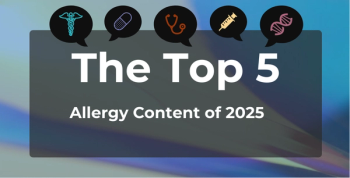
Research Indicates In Utero Origins of Acute Leukemia in Children
Circumstantial and direct evidence, including a review of twin and backtracking studies, demonstrate potential prenatal development of acute childhood leukemias.
Circumstantial and direct evidence from a series of investigations demonstrate potential in utero origins of
Acute lymphoblastic leukemia (ALL) and acute myeloid leukemia (AML) make up a large diagnostic collection of hematologic cancers, according to the researchers. Each disease has a distinctive age-related pattern; ALL is a primarily pediatric disease, while AML mostly affects adults.
There are multiple avenues that indicate circumstantial evidence for the in utero origin of childhood acute leukemias. Specifically, the young age of onset of ALL indicates potential prenatal leukemogenesis, the researchers wrote. Pregnancy has also been observed to be an important risk window, as perinatal characteristics and maternal exposures during gestation have been circumstantially linked with acute leukemias, which supports their in utero origin, according to the investigators.
Multiple lines of direct evidence also support the in utero conclusion made by the investigators. Findings from twin studies show a higher concordance rate for acute leukemia in monozygotic (MZ) twins than in fraternal twins. This difference is thought to be due to their shared placental vasculature, which facilitates the passage of blood cells between the twins, investigators shared. The hypothesis was confirmed through molecular genetic analyses of acute leukemias in concordant pairs of twins, the researchers recounted. These analyses detected identical fusion events in MZ twins that were concordant for leukemia, which supports a common clonal and in utero origin.
Due to the rarity of twins with acute leukemia, the investigators shifted focus to the analysis of backtracking studies, which involve analyzing blood samples acquired from children at birth who went on to develop leukemia for any leukemia-forming somatic alterations in the samples. In a study of 3 patients who received an ALL diagnosis when younger than 2 years, these studies confirmed the presence of translocations in their newborn dried bloodspots,
Shifting from epidemiologic investigations of childhood acute leukemias, the investigators postulated on the possible exposures during pregnancy that can drive the creation of the genetic lesions observed in twin and backtracking studies. Prenatal risk factors were investigated through meta-analyses, which indicated that such maternal conditions as diabetes, urinary tract infection, and influenza were risk factors for childhood leukemia in offspring, the researchers wrote.
Maternal exposures were proposed as a possible risk factor as well. An analysis of previous studies found a significantly higher risk of any childhood leukemia among the children of mothers exposed to irradiation during pregnancy. In additional, maternal occupational exposure to pesticides and home paint exposure were significantly associated with AML, the studies indicated.
Perinatal characteristics were included in the investigator’s review, too, as they are often used as indicators of the health of a pregnancy and the offspring. A high birth weight is associated with a higher risk of ALL, while a higher parental age at birth has been consistently linked to both ALL and AML, the investigators recounted.
Given the wealth of evidence indicating in utero origins of childhood acute leukemias, the investigators offered opportunities for prevention. They suggested promoting behaviors that lead to lower risk and suggested the possibility of screening for preleukemia at birth—although they recognize the inevitable ethical and practical challenges of such a practice.
“Additional work is needed to determine the timing of the development of childhood leukemia subtypes that have not yet been examined, which will inform the extent to which we may be able to screen for and potentially prevent all childhood leukemias,” the investigators concluded.
Reference
de Smith A, Spector L. In utero origins of acute leukemia in children. Biomedicines. 2024;12(1):236. doi:10.3390/biomedicines12010236
Newsletter
Stay ahead of policy, cost, and value—subscribe to AJMC for expert insights at the intersection of clinical care and health economics.







































